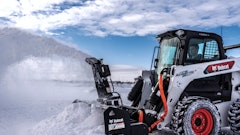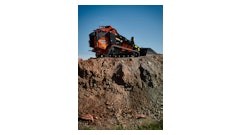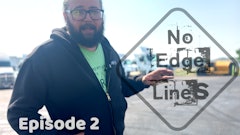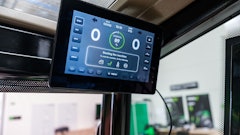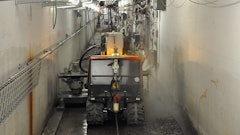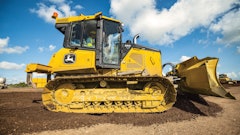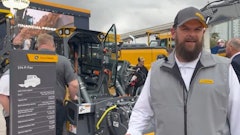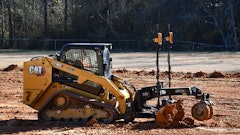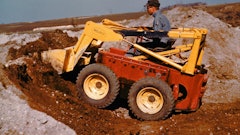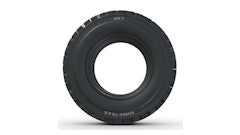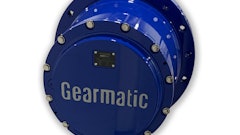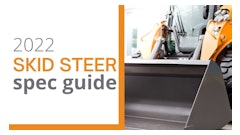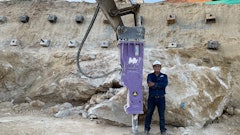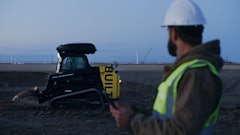
As with any piece of equipment, your customers want a productive, dependable unit that?s going to get the job done. If a machine can?t stand up to the daily rigors of the jobsite, it will soon be back in your rental yard, and your customer will be going somewhere else to get another machine.
With skid-steer loaders, rental businesses and contractors look for different things when purchasing a unit. For example, rental businesses look for features that ease maintenance and increase resale value. ?Rental stores appreciate features ... that reduce downtime,? says Greg Rostberg, marketing manager at Bobcat Co. ?[This ensures] the machines are out earning revenue versus in the shop for routine maintenance.?
But when contractors look at a skid steer, they?re worried about keeping their operators productive during the long work day. Therefore, comfort is at the top of the request list for skid steers. This means giving the operator more space and better visibility, multiple control options, enclosed cabs with heat and air conditioning, suspension seats and easy-to-read-displays.
Manufacturers of skid steers take customer feedback - including rental businesses, contractors and dealers - very seriously.
?We build machines around our customers, and they have always been the driving force in our product enhancements,? says Dave December, brand marketing manager for New Holland Construction.
This sentiment is shared by the other manufacturers sourced for this article. And over the past decade, these manufacturers have tried to style their skid steers to meet their customers? needs. So, what have been the driving trends for skid-steer development over the past 10 years?
Comfort = productivity
The biggest trend in skid steers over the last 10 years can be summed up in two words: operator comfort. With increased comfort, comes more productivity. So contractors are eager to make their operators as comfortable as possible.
?Most skid steer owners have realized that they will have more productive workers with a more comfortable cab,? says December.
Manufacturers offer many options to increase cab comfort. These include a range of choices, such as enclosed cabs, heat and air conditioning, suspension seats, sound-reduction packages or deluxe instrumentation.
?Technology has helped provide enhancements such as deluxe instrument panels that display in multiple languages and keyless start systems for increased security,? says Rostberg. ?Options like the keyless start allow rental store owners to lower their insurance premiums. With the growing number of Hispanic operators, rental customers can also appreciate features such as the Bobcat deluxe instrument panel that communicates vital functions and warnings in Spanish, as well as six other languages.?
When it comes to comfort, some manufacturers have recently introduced deluxe cab options for their skid steers. For example, New Holland now offers a deluxe cab design for its Super Boom units.
?There seems to be a pattern in the market for including more creature comforts in the cab design,? says December. ?Our deluxe cab interior features full-covering, noise-absorbing trim for a more comfortable, quieter place to work. Available as an option, an additional sound-suppression package reduces noise levels by up to three decibels from the operator?s station for an even quieter cab environment. A standard suspension seat and contoured arm rests offer more elbow and forearm support during long hours on the jobsite.?
Another significant advancement for skid steers in the last 10 years is the many choices available to control the machine. ?We?re seeing more hand control and less of the hand/foot variety,? says Kelly Moore with Gehl Co. ?Joystick and pilot controls are becoming more popular, perhaps because a joystick is more natural for younger workers.?
Many machines offer more than one control pattern so operators have a choice. One example is Bobcat?s optional Selectable Joystick Controls, or SJC, which features low-effort joysticks for controlling all machine functions with the hands. These control options enable multiple operators to easily choose their preference for using the skid-steer loader.
What does all this mean to a rental business? Should you run out and purchase a fleet of skid steers with deluxe cabs, comfortable seats and pilot controls? Maybe, says Moore with Gehl.
?It depends on what your customer base wants and expects,? says Moore. ?You?ll have to research your customers like we do ours. Some contractors might just want a basic machine to get that day?s job completed, others might want a more deluxe version for a longer rental period. You might end up with both types of skid steers in your fleet.?
Getting bigger & growing tracks
Another trend for skid steers over the last decade is the preferred size of the unit - skid steers are getting bigger. ?Contractors seem to be migrating toward larger machines,? says Moore with Gehl. ?The 1,900- and 2,000-pound-capacity machines are more prevalent now. It used to be the most popular sizes were the 1,600- and 1,800-pound-capacity units, which are mid-size skid steers. The trend is definitely toward larger machines.?
The reason for the change in size preference? More performance and more productivity, says Moore.
According to several sources, another big trend for skid steers is the growth of the compact track loader (CTL) market. ?Compact track loaders were being sold in the market prior to 1999,? says Rostberg. ?But they never gained much favor in North America.?
Their popularity has exploded and the market has been flooded with CTL models in the last 10 years. ?Compact track loaders are sometimes supplemental machines, sometimes replacement machines,? says Moore. ?We?re starting to see more brands and more varieties of models in the market today.?
Why the sudden change? Productivity.
?The tracks of the machine distribute the machine?s weight across a larger area for minimal ground disturbance,? says Rostberg. ?This weight distribution also improves flotation and allows compact track loaders to operate more productively in wet or muddy conditions, getting the operator back on the job sooner after a heavy rain or extending the work season.
?More ground-to-surface contact optimizes the machine?s pushing power and performance and increases production when the operator is either rough or finish grading a lawn,? he continues.
Rental businesses are also jumping on the CTL bandwagon. ?Rental stores are adding more and more compact track loaders to their equipment fleets based on demand from their customers who want the advantages of working earlier in the season, getting back to work sooner in wet ground conditions, and extending the working season in climates where heavy precipitation in the fall and winter can shut down operations,? says Rostberg.
Productivity outside the cab
There have been some design changes to the outside of compact loaders that enhance productivity. Some manufacturers offer units with vertical-lift booms. For example, New Holland?s Super Boom is now standard on its larger skid steers.
?This design increases productivity by providing high lift capacities, long forward dump reach and fast cycle times,? says December.
Another ?outside the cab? innovation for CTLs is the launch of Bobcat?s roller suspension system designed to offer a more comfortable ride.
?The Bobcat roller suspension system minimizes vibrations at the source - the ground,? says Rostberg. ?There is a direct relationship between operator comfort and productivity. If the operator can comfortably stay in the seat longer, they will get more work done. Here?s an example of innovation happening outside the cab to bring a more comfortable experience to the operator in the cab.?
Tomorrow?s skid steers
Skid steers will continue to be refined by manufacturers to provide a more quiet, more ergonomic experience for operators, all in the name of productivity.
?You?ll probably see skid steers with very sophisticated cabs, like those you see in pick-up trucks today,? says Moore with Gehl.
While it sounds futuristic, getting the operator out of the cab entirely is already a possibility with Bobcat?s loader radio remote control system. ?Remote operations could gain a stronger foothold in the next five years and will likely lead to new product innovations in the future,? says Rostberg.
Needless to say, the skid steer is a staple on today?s jobsites and will be on tomorrow?s jobsites as well. Manufacturers will continue to listen to their customers to provide refinements for a better operator experience and increased productivity.








